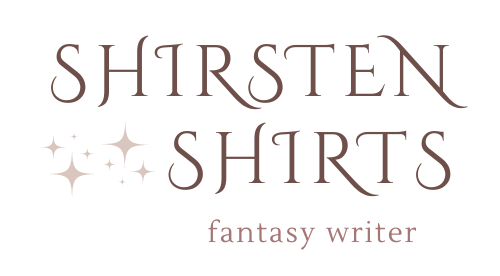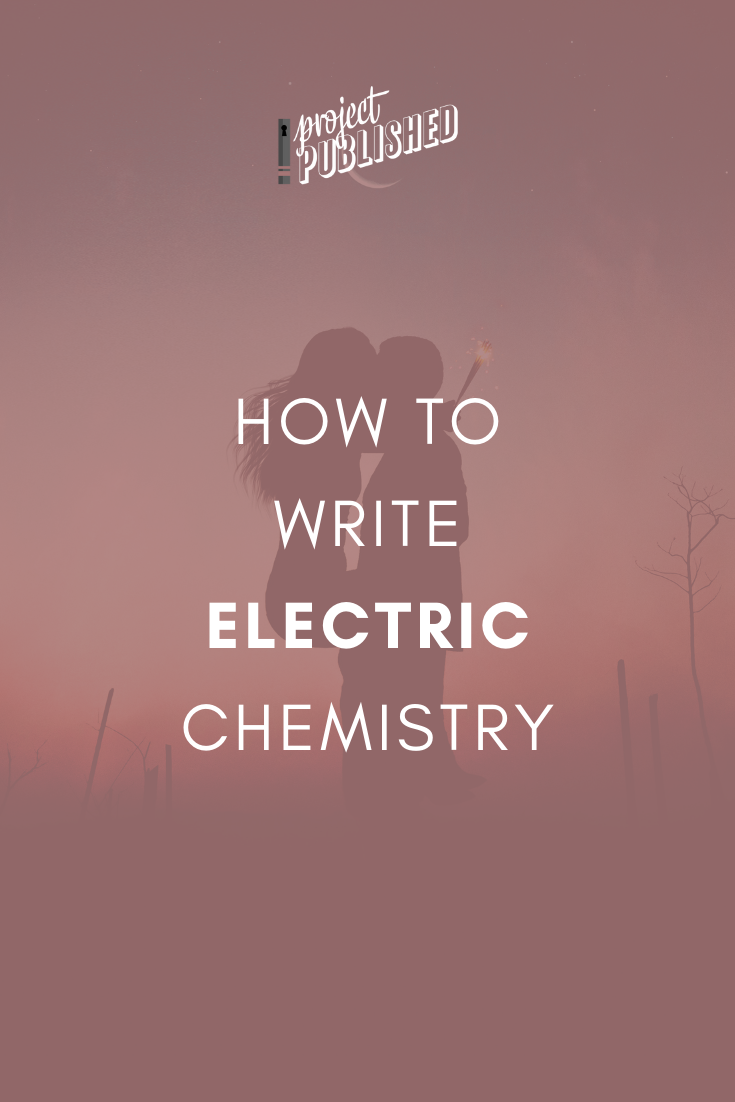How to Write Electric Chemistry
Lovable misfits, romantic entanglements, lasting friendships, adorable family dynamics - character chemistry is the secret sauce to creating a story people want to consume over and over.
But how do you capture it?
That’s what I set out to discover. I love children’s stories, so my first instinct (strange as it may seem) was to turn to one of my favorites: Monster’s Inc.
And what did I learn from analyzing this story? The story I fell asleep to every night as a ten-year-old struggling with nighttime anxiety?
Other than every single line of the movie, I learned that character chemistry is much more achievable than you might think.
To begin with here’s what character chemistry is not:
It’s not hitting the dialogue just right or lucking into the perfect characters. Instead, it’s dependent on complex, lovable, relatable characters who work well together within their story.
To understand this, I found that it’s important to look at characters:
individually
in relation to other characters
and where they fit in the story as a whole
So let’s see how Monster’s Inc. incorporated several common threads present in stories with exceptional character chemistry.
1. Strong individual characters
Any kind of chemistry instantly falls flat if the individual character is not well-rounded, complex, and interesting.
We want depth in our characters. We want goals outside of whatever relationship the chemistry is founded on, and we want a character who is an active participant in their life — it’s not interesting to hang out with a character who is passively letting life happen to them.
To illustrate this point, let’s look at an example where it fails to deliver.
While it might be entertaining to watch Bella and Edward together — because as millions of girls will tell you, they do succeed in other common threads for character chemistry — the relationship falls flat because of Bella’s lack of outside interests, outside goals, and complexity as an individual character.
Almost every beat of the story happens to her — Edward stalks her, he brings her to meet his family, and he puts her in a situation where another vampire decides to target and track her. Bella as a character has no outside goals or interests, and when she does get swept up in her relationship with Edward, she quickly transfers the center focus of her world to him and him alone.
Sulley, our lovable furry friend, has well-established goals in his own story and a dynamic personality.
He’s ambitious in his career and willing to work hard, he’s a caring friend, he’s concerned for the wellbeing of his coworkers and for his city, he has a strong moral compass seemingly at odds with the work he’s best known for. All in all, he’s a complex character eager to take an active role in shaping his life.
This is almost always the case.
Pull a character out of a story with superior character chemistry and you’ll find that their complexity as a character, as well as their personal goals and ambitions, are tangible and easy to identify.
I do find it interesting to look at examples of successful stories that fall short in crucial storytelling techniques. Twilight is a successful story. Definitely in terms of readership. I was a teenager when it came out, and I ate up the books like a hungry vampire. And, as I mentioned, one of the reasons it is successful is because of the chemistry in it.
But one of the reasons it takes so much heat is because it fails to deliver in this crucial category.
What about some more examples?
Two of my favorite television shows that I believe have great ensemble character chemistry are Parks and Recreation and Community.
What do we find when we analyze a character from the cast?
Leslie Knope has dreams of becoming the first female president of the United States. Abed wants to be a filmmaker, Ron fights to keep his life in line with his ideals, Annie works hard to achieve excellence in everything she does.
The characters as a whole are well-rounded and interesting to watch, and that interest translates into chemistry with the other characters.
2. Authentic and relatable emotions
Mike Wazowski is lovable and entertaining. Why?
Because he’s completely himself.
He’s goofy and awkward and ambitious and crotchety and selfish and he’s got a lot to learn.
It shows that excellent character chemistry stems from a situation where the characters we love are able and willing to express emotions in a relatable way where other characters are (whether outwardly or implicitly) accepting of these emotions (more on this in 4).
This is most obvious with lovable misfits, but who doesn’t love watching Mike’s cringe-worthy eagerness? Who’s not happy to come along for the ride as Mike sticks by Sulley’s side despite him putting everything they’ve worked for in jeopardy?
3. Redeemable traits
And the most important redeemable trait: genuine care for other people.
Chemistry doesn’t exist without concern for the other players in the story.
Even the most seemingly detached, unfeeling, and selfish characters show love and care for others. In fact, those types of characters are often the most magnetic.
Because their concern for others goes against their more defining traits as an individual, which creates a new level of complexity for the character and for the story as a whole.
Note: I have such a soft spot for these characters! Hard-shelled on the outside, but able to feel deep love for the characters that worm their way into their hearts. Think Edward Rochester, Mr. Darcy, and Severus Snape.
As another example of a situation with a lack of chemistry, let’s actually take a look back at Community.
In the first season, Jeff and Britta were meant to have a tension-filled, will-they-or-won’t-they type of romance. But it fell flat.
Why?
In my opinion, one of the biggest culprits was the fact that they did NOT have that underlying care and concern for one another. When we join their story, Jeff is chasing Britta for the sole purpose of initial attraction, and she shuts him down. That’s it, end of story.
The chemistry within the ensemble was only able to grow once they all developed that fundamental level of caring and empathy for one another.
4. Sacrifice
In fact, the best chemistry comes through when that level of caring is so deep that it can be demonstrated in a clear-cut way. For example, through sacrifices for one another.
A sacrifice might mean giving up their spot as the most beloved toy (Toy Story), braving the ocean even when you’re haunted by fear and trauma (Finding Nemo), or being willing to melt for someone you love (Frozen).
Sulley and Mike Wazowski sacrificed dreams and ambitions they each spent years working for in order to do right by Boo. Mike was willing to go through physical pain and weeks of tedious work in order to present his friend with a thoughtful and selfless gift.
These are things I love to watch. Sacrifices show selflessness and are a building block of great chemistry.
5. Individuality
One of the most cliched tropes of character chemistry is the opposites attract. There’s a reason this works. Differences are what make life exciting!
I want to see characters that are varied and that play up each other’s differences in an interesting and entertaining way. This is an extension of point 1, but equally important. Give them complexity as a character and individuality that differentiates them.
6. Reliance on one another
Fundamentally, a story is about working towards a goal.
In John Truby’s The Anatomy of Story, he writes,
“A story doesn’t become interesting to the audience until the desire comes into play. Think of the desire as the story track that the audience ‘rides along.’ Everyone gets on the ‘train’ with the hero, and they all go after the goal together. Desire is the driving force in the story, the line from which everything else hangs.”
Every story has a goal the characters are working toward.
It might look like finding their son or getting home to their kid. But chemistry comes around in full force when two or more characters need to work together in order to achieve something specific.
Dory volunteers to help Marlin, Woody and Buzz reluctantly work together, and Mike and Sulley come up with hare-brained schemes in order to get Boo back home.
The most interesting piece of this element is obstacles, both outward (like running into trouble), and inward. Like overcoming hate, annoyance, differences, and insecurities as the characters grow.
7. Growth
Finally, we have growth.
Growth is incredibly rewarding - when we witness it and when we experience it ourselves. And where would our beloved characters be if they didn’t have growth?
Sulley and Mike becoming more selfless is adorable. Furry, one-eyed monsters deciding that taking care of a strange child is more important than getting ahead at work? I’ll watch that all day long.
As another example, Cap and Iron Man embody important qualities that they are able to pass onto one another. Cap softens Tony’s hard edges, and Tony sharpens Cap’s soft ones. This makes them more complex, more relatable, more admirable, and more lovable.
To have great character chemistry, we have to see the characters we love grow. Together and individually.
Why is character chemistry important?
The answer is simple: chemistry demands emotion.
And effective and authentic emotion is the most important element to a great story.
When we feel emotions as a viewer or reader, we remember the story. And positive emotions, like those found in Monster’s Inc, make a story re-watchable.
We’re happy to sit with those emotions over and over. We have nostalgia for them as we grow older. The story becomes memorable and earns a place in our heart. Similar to theme, when a story nails this element, it elevates its overall effectiveness.
Character chemistry also helps us root for the characters. When we witness characters in a story caring deeply for one another, it triggers our natural empathy. We want them to succeed, to grow, to achieve their goals.
The fastest way to write a strong story is with an effective outline that plots your novel’s beating heart.
In Outline Your Novel, you’ll learn exactly what these beats are, why they matter, and how to outline them effectively to make your story sing.







